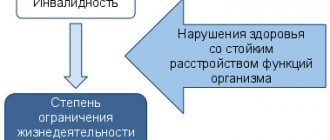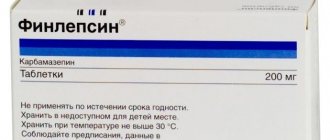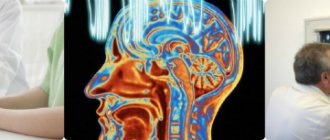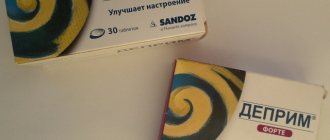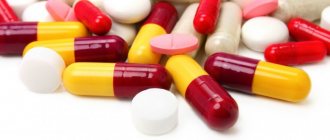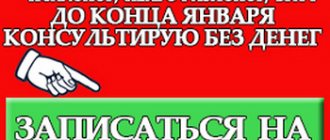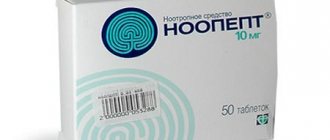Certain attention attracts
possible involvement of glycine in epileptogenesis.
Like GABA, it inhibits neuronal activity at all levels of the central nervous system, but is greatest in the spinal cord and brain stem. It is possible that both amino acids inhibit paroxysmal excitation. In addition to its direct inhibitory effects, glycine may influence neuronal activity through its close association with glutamine metabolism as it inhibits glutamine synthetase. Perhaps the decrease in glutamine
during epileptic paroxysm is explained precisely by this circumstance.
In addition, glycine is a precursor to a number of important compounds
: tryptophan, histidine, carbamonyl phosphate, glucosamine-6-phosphate, AMP, i.e. can activate the “synthetic cycle”.
The glutamine system also affects acetylcholine
(OH). In particular, for its accumulation in an inactive form, ACh requires the presence of glutamic acid, potassium and magnesium nones. ACh is a mediator whose role in the pathogenesis of epilepsy has been discussed for quite some time. It is known to cause depolarization of pyramidal cells.
Cholinergic neurons are present in subcortical structures and the brain stem
, a significant proportion of cortical interneurons and reticulocortical neurons are cholinergic. The use of cholinesterase inhibitors, and especially poisoning with organophosphorus compounds, is often accompanied by the occurrence of convulsive epileptic seizures. A direct effect of cholinesterase inhibitors on epileptic activity has been shown. In patients with epilepsy, audiogenic stimulation, etc.), a significant increase in the level of serum cholinesterase was found.
Also in numerous experimental studies
In the brain tissue of animals after convulsions caused by various factors (amidopyrine injections, electric shock, auditive stimulation, etc.), a significant increase in cholinesterase activity was found. It is suggested that the main role in the mechanism of increased epileptic excitability is played by a violation of the relationship between catecholamines and acetylcholine. This is consistent with the data on the creation of the Cain model of experimental TLE, in which pathomorphological changes similar to those in human TLE occur in the hippocampus. Cannoic acid causes a significant increase in the content of ACh and a decrease in the content of norepinephrine. At the same time, the activity of glutamate carboxylase decreases and the reuptake of new acid by glutamates decreases, which is accompanied by an increase in the activity of the excitation neurotransmitter glutamate and a weakening of GABAergic transmission with the occurrence of epileptic seizures.
N. P. Bradford and PR Dodd (1976) consider the participation of AH to be undoubted
in the spread of epileptic seizures, although its role in their occurrence cannot yet be established.
Perhaps the greatest attention is drawn to the study of the state
in epilepsy, the system of biogenic amines, including catecholamines - dopamine, norepinephrine and adrenaline. This is understandable if we take into account the strategic role of these substances in basic neurophysiological processes. Many biogenic amines perform mainly a suppressive function, so a change in their content in brain tissue is accompanied by a facilitating effect.
Increased sensitivity to convulsive effects
determined in parallel with a decrease in the level of all biogenic amines in the brain. The period of maximum risk of seizures in mice and rabbits of genetically predisposed strains correlates with the period of decreased levels of serotonin and norepinephrine in the brain.
Glycine has been used for a long time as a medicine to influence higher mental functions. Glycine for epilepsy is allowed to be taken by both adults and children. The drug helps improve mental activity and calm the patient’s nervous system; it is often used to improve the patient’s condition in the complex treatment of seizures.
So is it possible to take Glycine for epilepsy?
Aminoacetic acid is found in all tissues of the human body. The largest amount of acid is found in the spinal cord and brain. It plays the role of a regulator of nerve cell activity, acting as an inhibitory transmitter.
In a special study, it was proven that Glycine can suppress epileptic seizures. More than half of the participants reported the absence of attacks or a decrease in their number after taking the medicine. Doctors advise children to use Glycine as an adjuvant in complex treatment.
The properties of aminoacetic acid help prevent catecholamines, which are produced by the human body in a stressful situation, from negatively affecting brain neurons. This effect helps to avoid an attack of epilepsy and possible sleep problems. Prescribing Glycine helps avoid taking powerful tranquilizers (Sibazon is often used).
People who suffer from epileptic seizures often experience problems with mental performance and other cognitive functions. The amino acid enhances the electrical activity of the occipital and frontal parts of the brain, which helps to concentrate the patient’s attention, improve his memory and normalize the speed of mental reactions.
A positive effect from a course of Glycine can be achieved in the presence of a post-traumatic form of epilepsy. The product provides the sore spot with normal blood flow and restores it after hypoxia.
After taking the drug, the impact of psycho-emotional factors on the patient’s nervous system is reduced:
- irritation is suppressed;
- excitability decreases;
- aggression and anger go away.
The drug does not have a cumulative effect, so it does not lead to addiction; after a course of treatment, withdrawal syndrome does not occur.
Is it possible to take
Glycine is an aminoacetic acid present in all tissues of the body. The highest concentration is found in the brain and spinal cord. The medicine regulates the activity of nerve cells and is an inhibitory mediator.
These properties allow the product to protect brain neurons from the negative effects of catecholamines, which are produced during stress.
This prevents attacks and normalizes sleep. Taking amino acids helps avoid the prescription of tranquilizers.
Epileptics often experience cognitive impairment.
The amino acid increases the electrical activity of the frontal and occipital regions of the brain, thereby improving attention, memory, and increasing the speed of mental reactions.
Taking Glycine for post-traumatic epilepsy has a good effect; it improves blood circulation in the affected area and eliminates the effects of hypoxia.
In patients, after taking the medicine, negative psycho-emotional reactions are weakened:
- irritability decreases;
- excitability decreases;
- Aggression and conflict are eliminated.
The drug does not have a cumulative effect, is not addictive, and there is no withdrawal syndrome after completing the course.
The effect of glycine on the patient's body
Glycine is especially widely used in epileptology, especially in the treatment of neuroses that arise due to epilepsy.
The medicinal effect of taking the drug is characterized by the following features:
- has an anti-stress effect;
- nootropic effect: memory and attentiveness improves;
- can cleanse the body of toxins and harmful substances (during alcohol intoxication and other forms of toxic poisoning);
- helps improve immune defense;
- suppresses aggressiveness, conflict and other uncontrollable manifestations of nervousness;
- eliminates hematopoietic disorders;
- stimulates normal blood circulation in the brain.
The drug has its advantages, which any patient should know about. These include:
- minimal number of contraindications and side effects;
- allowed for use by patients of any age;
- Glycine does not cancel the course of taking another drug;
- There is no pronounced addiction or withdrawal syndrome.
Description of Phenibut
Phenibut is a nootropic and anxiolytic drug with a long history - it was synthesized and studied in the middle of the last century. The active substance of Phenibutum is aminophenylbutyric acid.
Phenibut is available in tablet form - 250 mg. It is produced mainly in Russia, therefore it has a low cost.
Main indications for the use of Phenibut:
- the need to intensify mental activity, increase the rate of speech development, improve memory;
- increased influence of negative factors on the brain - overload, hypoxia;
- stressful state with increased levels of anxiety, panic attacks;
- chronic insomnia;
- malfunctions of the vestibular apparatus;
- nervous tic;
- stuttering;
- enuresis;
- alcohol syndrome;
- excessive anxiety before the upcoming surgery;
- severe attacks of seasickness.
Phenibut can be taken by both an adult (but at the age of over 60 years in a lower dosage) and a child. This drug is prescribed by a neurologist and is sold from pharmacies strictly according to prescription.
Whether it makes sense to take Phenibut for epilepsy, only the attending physician can answer in each specific situation . Phenibut has the property of enhancing the effect of sedatives and anticonvulsants used together with it. Therefore, when treating with anticonvulsants, taking Phenibut is not advisable, so as not to overdo the effect.
Only the doctor treating the patient can predict the effects of Phenibut in epilepsy and decide on the need for treatment with this drug. In any case, the dosage of medications, dosage regimens and courses of therapy must be selected individually.
Epilepsy is not a simple disease. Treatment requires a person to take a careful and attentive attitude towards himself, carefully follow the doctor’s recommendations, maintain a healthy lifestyle and maximally avoid factors that provoke epileptic seizures. You can take medications only as prescribed by a doctor; self-medication is really life-threatening.
Drug interactions
Glycine can react with a large number of chemical compounds (nitrites, ketones, sulfur). The product has an antitoxic effect and helps reduce the negative effects of harmful substances. For this reason, the drug is often prescribed in the presence of intoxication.
The drug helps reduce the toxic effects of certain psychotropic medications that are often prescribed to patients with epilepsy. It maintains amino acid levels in cells. Glycine reduces the side effects of taking antidepressants, tranquilizers, anticonvulsants and sleeping pills.
Side effects
Side effects while taking phenibut are usually detected at the initial stage of therapy, but only if there are no contraindications, the body is hypersensitive to the components of the medication, and the dosage is observed. Phenibut in general is a low-toxic pharmacological drug.
Side effects appear:
- drowsiness;
- slight dizziness;
- headaches;
- periodic bouts of nausea.
Some patients also experience mood swings, increased irritability, anxiety, and allergic manifestations.
In older patients, blood pressure changes throughout the day.
In case of overdose or non-compliance with the dosage indicated in the annotation, phenibut provokes severe poisoning, intoxication, vomiting, hallucinations, renal failure, weakness, and drowsiness.
If side symptoms occur, patients are washed with gastric lavage and symptomatic therapy is prescribed to normalize the condition. The drug is stopped.
Contraindications
Regarding contraindications, Phenibut is not prescribed for hypersensitivity to the components of the drug, as well as:
- during pregnancy, lactation;
- children under 8 years old;
- in acute renal failure;
- chronic liver pathologies.
Important! As with other phenibut medications, the course of treatment must be prescribed by your doctor. The course, frequency of administration, and duration are prescribed individually.
Phenibut should be taken with caution in case of ulcerative, erosive lesions of the stomach, intestines, as well as if chronic pathologies in the gastrointestinal tract are diagnosed. For these violations, a tranquilizer is prescribed in smaller doses.
Is it addictive?
With long-term use of phenibut (more than six to seven weeks) and non-compliance with medical recommendations, phenibut can cause physical and psychological addiction. After discontinuation of the drug, a person may feel the need for medication due to the fact that the active components of the drug have affected the metabolism.
Addiction is manifested by weakness, nervous conditions, emotional deterioration, dizziness.
Accustoming to phenibut is also possible with prolonged use of it with other drugs, in combination with which the tranquilizer causes a slight feeling of euphoria.
Contraindications and side effects
The main advantage of the product is that it has no absolute contraindications, and is also suitable for patients of any age group. A ban on its use may be individual intolerance to the active components in the medicine and low blood pressure.
When taking the drug for a course, no side effects occur. Allergies manifest themselves extremely rarely and most often in the form of a rash on the surface of the skin. In hypotensive patients, the drug often leads to a drop in blood pressure.
How does glycine affect the course of VSD?
Glycine contains 100% aminoacetic acid, and it is a natural part of proteins and many important compounds in the human body.
The active substance of the drug “repairs” the brain and central nervous system, restoring protective functions and improving metabolic processes. Glycine serves as a restorer of damaged cells, but does not affect healthy tissues in the body at all. Therefore, it will not add extra genius to a person at an important interview, but it will reduce mental stress and eliminate strong emotions - which, of course, is important for a high school student. And most importantly, Glycine partially blocks adrenergic receptors in the body, due to which a person sometimes cannot fall asleep and concentrate normally. The longer the VSD patient takes the drug according to the instructions, the better the repair progresses within his brain and central nervous system. As a result:
- Aggression and the desire to start a conflict are reduced;
- Social function is being established;
- The mood is lifted;
- Sleep becomes stronger and healthier;
- The manifestation of neuroses is smoothed out;
- Mental abilities improve;
- There is a surge of strength and a desire to engage in physical activity;
With a well-functioning brain, which receives all the necessary substances with a sufficient amount of blood, and with stronger nerves, the symptoms of VSD, as a rule, are somewhat smoothed out. At the same time, the situation with panic attacks is changing. Their manifestations become less bright, and their number decreases.
It should be noted that Glycine is a fairly “soft” reducing agent, and one cannot expect incredible miracles from it. If panic attacks have a persistent tendency to manifest themselves and cause suffering to the patient, relying on aminoacetic acid is the same as treating fractures with plantain.
The deeper the psychological causes of adrenaline crises lie, the less likely it is that the nootropic drug Glycine will cope with the attacks and delay their occurrence.
Whether Glycine will help with PA depends on how severe the VSD is, and how severely the nervous system is affected and the blood circulation in the brain tissue is impaired.
Dosage for children and adults
It must be remembered that Glycine is a non-essential amino acid. The medicine is distinguished by its inhibitory effect, which helps reduce the amount of glutamine in the body during epilepsy.
When treating a child, as in the case of other patients, the most important thing is to choose the correct dosage.
The instructions for the drug advise using the standard course of administration - 30 days. Children over 14 years of age take 3 tablets every day, they are simultaneously placed under the tongue and dissolved.
Children who have recently been born are allowed to give half a tablet several times a day, mixed with milk, the average time of administration is about 14 days. For children from one year to 14 years old, the doctor prescribes 1.5-2 tablets several times a day, the course lasts 14 days. The dosage in all cases is prescribed exclusively by a pediatrician.
Adults and children need to be treated with Glycine comprehensively. The number of tablets per day will be prescribed by the doctor; it will directly depend on the form of the disease, the number of daytime epileptic seizures, the degree of damage to the nervous system, the general effect of epilepsy on the body and the presence of accompanying symptoms.
The standard dosage of the active substance for an adult is 200 mg. The tablets are placed under the tongue and dissolved, the use continues for the next 30 days. It is allowed to take the drug in powder form. To do this, you need to take 2-3 tablets and crush them thoroughly. For a lasting effect, the resulting medicine must be inhaled several times a day. Glycine can be safely added to medications for the treatment of epilepsy attacks. Reviews about the treatment with the product are always positive.
The drug Glycine has a nootropic effect and is prescribed for a large number of vascular pathologies.
It simultaneously reduces nervous excitability and stimulates mental activity.
It is widely used in the complex treatment of convulsive seizures, having a positive effect on the condition of patients. Glycine is also used in the treatment of epilepsy.
Information about epilepsy
The main symptom of epilepsy is well known to any person, even those very far from medicine - these are sudden attacks of convulsions. In addition to them, moments of loss of consciousness and falling into a trance, attacks of somnambulism are possible. There are known cases of epileptic dementia with delusions and hallucinations, and epileptic psychosis. For the latter, acute panic attacks, periods of deep melancholy and excessive aggressiveness are a clear sign.
A patient diagnosed with epilepsy is seen by neurologists and epileptologists. Treatment can be either medicinal or more radical - even surgical. Traditionally, anticonvulsants (anticonvulsants), neurotropic and psychotropic drugs are prescribed for epilepsy. Recently, racetams (a type of nootropic) have been actively studied as a treatment for epilepsy.
In addition to medication therapy, surgical interventions, physiotherapeutic techniques, low-carbohydrate diets and schemes to eliminate the provocateurs of epilepsy attacks can be used.
The question of whether it is worth taking Phenibut for epilepsy can only be resolved by understanding the drug.
Effect on the patient's body
The amino acid has extensive experience of use in epileptology, especially in people suffering from neuroses due to epilepsy.
The therapeutic effect of the drug is due to the following aspects:
- Providing a universal anti-stress effect.
- Nootropic effect, expressed by improving memory and attention.
- The ability to relieve intoxication (in the case of alcoholic, toxic forms of the disease).
- Immunostimulating effect.
- Prevention of attacks of aggression, uncontrollable mental reactions.
- Normalization of cerebral circulation.
Advantages of the product:
- Minimum contraindications and side effects.
- No age restrictions.
- Possibility of combination with other medications.
- No addiction, no withdrawal syndrome.
Hormonal treatment
It has now been proven that an increased concentration of some hormones in the human body can provoke an epileptic attack, and an increase in others can stop it.
Therefore, the practice of hormonal treatment has become widespread today.
Dexamethasone:
- prescription drug administered by injection;
- the daily dose is determined individually, starting from 10-15 ml;
- sometimes affects delayed sexual development in children;
- long-term use is not recommended.
Prednisolone for epilepsy:
- available by prescription;
- medicine made in India in the form of tablets;
- daily dose from 20 mg once in the acute phase to 5 mg in remission;
- It is prescribed with caution for infectious fungal and bacterial diseases and after them.
Drug interactions
Glycine has the ability to interact with many chemical compounds (nitrates, sulfur preparations, ketones).
It has an antitoxic effect and reduces the negative impact on the body. This explains the prescription of the drug for the toxic form of the disease.
The antitoxic effect also extends to psychotropic medications, often prescribed to epileptics. It prevents these drugs from reducing the level of amino acids in cells.
Thus, Glycine reduces the side effects of anticonvulsants, antidepressants, and sleeping pills.
Phenibut: analogues
Analogue medications
There are analogue drugs of Phenibut with different chemical compositions, but similar effects on the body with similar indications for use, and synonymous drugs with the same active ingredient, but from different pharmaceutical manufacturers.
Analogue drugs
- Adaptol tablets
- Aminalon tablets
- Atarax tablets
- Afobazole tablets
- Vinpocetine tablets
- Glycine tablets
- Cavinton tablets
- Calcium hopantenate tablets
- Lucetam tablets
- Mebicar tablets
- Nootropil tablets
- Omaron tablets
- Pantogam tablets
- Pantocalcin tablets
- Picamilon tablets
- Piracetam tablets, capsules
- Strezam capsules
- Tenoten and Tenoten for children lozenges
- Fezam capsules
- Phenorelaxan tablets
- Phenotropil tablets
Synonymous drugs
- Anvifen capsules
- Noofen capsules
Indications
The medicine is widely used in patients with epilepsy.
Indications for use are:
- seizures;
- post-traumatic, toxic form of the disease;
- cognitive disorders accompanying the disease;
- the occurrence of neurosis-like conditions, attacks of aggression, anxiety;
- vegetative-vascular dystonia;
- sleep disturbance, difficulty falling asleep.
Indications for use
The drug should be prescribed to adults and children only by the attending physician. Phenibut is prescribed:
- to normalize the psycho-emotional state (fear, anxiety, psychopathy);
- with severe asthenic syndrome;
- to normalize and improve mental activity;
- for sleep disorders, insomnia (dyssomnia), frequent nightmares;
- for the prevention of anxiety in adults;
- for obsessive-compulsive neuroses;
- to prevent motion sickness (sea sickness);
- with alcohol abscinosis, addiction, diliriosis syndrome, delirium tremens; decrease in emotional activity.
Indications for the use of phenibut are also: Meniere's disease, otogenic labyrinitis, stuttering, nervous tics, enuresis in children, dizziness, migraine caused by dysfunction of the vestibular apparatus, primary anterior-open glaucoma, discirculatory encephalopathy.
Phenibut is also prescribed to women during menopause (during the premenopausal period), as well as to people whose profession is accompanied by severe mental stress and frequent stress (to prevent stressful conditions).
Phenibut increases the duration of action of hypnotics, narcotic analgesics, antipsychotics, antiparkinsonian, anticonvulsants, drugs. The tranquilizer increases the therapeutic effect of antiepileptic drugs, and therefore can be prescribed during nootropic therapy for people suffering from frequent attacks of epilepsy.
How to take Phenibut for adults
Dosage and course duration are prescribed individually. Much depends on the purpose of the appointment, stage, duration of a particular disease.
According to the instructions for the use of phenibut in adults for various conditions, it is recommended to take tablets in a daily dose of 0.75-1.5 g (one or two tablets twice, three times a day). In some cases, the doctor may increase the daily dose to 2.2-2.5 g.
The maximum permissible single dose of a tranquilizer for an adult under 57-60 years of age is 0.75 g of phenibut. For older patients - 0.5 g at a time.
On average, the duration of the course for adults ranges from 21 days to one and a half months. The optimal course of treatment is from 14 days to three weeks. In some cases, the duration of treatment may be increased by the doctor.
How to take phenibut for children
The medication is intended only for children over eight years of age and only if necessary! The tranquilizer is contraindicated for children of younger age groups, as indicated in the instructions.
For children from eight to fourteen years old, the daily dose of Phenibut is 0.75 g (three tablets of 0.25 g per day). The indicated dose is divided into three doses. It is worth noting that since the dosage of the nootropic is quite low, the best option for children is powder. This will help avoid overdose when treating children.
If necessary, it is permissible to increase the single dosage to 0.3 g, but only on the recommendation of the attending physician.
Instructions for use
The nootropic is intended for oral use. When treating, strictly follow the dosage indicated in the instructions or prescribed by your doctor. Tablets and capsules are taken after meals. The medicine should be washed down with plenty of water without biting or chewing.
Advice! You should not take Phenibut before meals, as the medicine may cause irritation to the gastrointestinal mucosa.
The maximum permissible dose of nootropic at one time is 750 mg (3 tablets) for adults, 500 mg (2 tablets) for people over 65 years old, 300 mg for children 8 - 14 years old and 150 mg for children under eight years old.
With long-term use of Phenibut, it is very important to monitor changes in indicators of functional activity of the liver and the picture of peripheral blood. During treatment, refrain from performing work that is associated with a risk to health and life, activities that require increased concentration and high speed of psycho-motor reactions.

